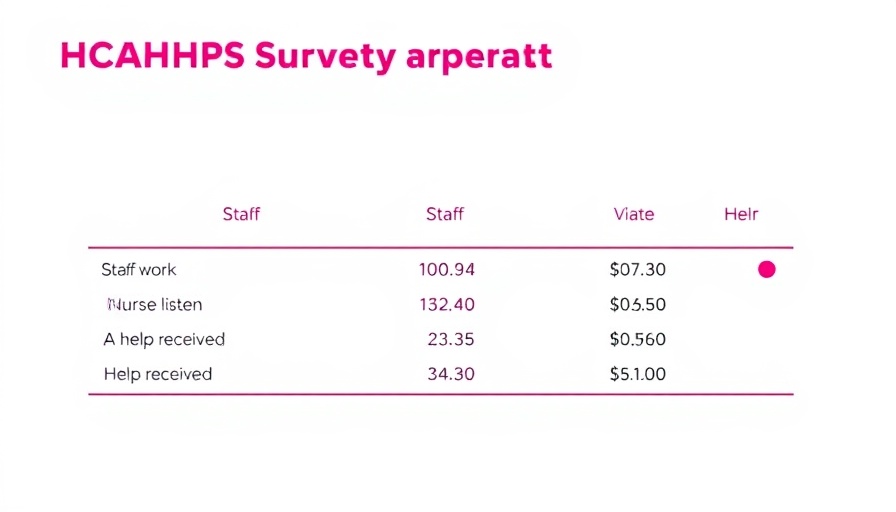
HCAHPS 2.0: A Game Changer in Patient Experience
The introduction of HCAHPS 2.0 on January 1, 2025, marks a pivotal change in how healthcare systems will evaluate patient experiences. This updated framework not only incorporates new survey items and revised domains but aims to focus on the critical aspects of the hospital experience that matter most to patients. With nearly two decades since its initial launch, this modernization opens doors for healthcare leaders to reassess their strategies and enhance patient care quality at every level.
Understanding the Data: Key Insights from Early Trends
In partnership with PRC, the Healthcare Experience Foundation has analyzed data from 18,167 patient surveys collected under the new HCAHPS framework. With a response rate of 32%, these initial findings provide a crucial look at emerging trends in patient feedback. According to regression modeling in the study, key drivers such as overall hospital ratings and the likelihood to recommend are based primarily on how seamlessly healthcare teams coordinate care.
The Importance of Teamwork in Patient Care
One standout feature of the updated HCAHPS survey is a new question that lets patients specify the nature of their visit. The data revealed that 65.7% of hospital admissions were unplanned, emphasizing a heightened risk for patient experience ratings. This finding underscores the necessity for hospitals to enhance communication and cohesion among their medical teams. In an age where healthcare is becoming increasingly collaborative, fostering team-based care is no longer optional—it’s essential.
Improving Patient Experience: Strategies for Healthcare Leaders
To align with these fresh insights, healthcare leaders have clear paths forward:
- Foster Team-Based Care: Align all stakeholders—including leaders, physicians, and staff—to prioritize interdisciplinary collaboration.
- Advance Communication Skills: Focus on empathetic listening and clear, responsive communication at all levels of patient care.
- Respond Proactively to Needs: Improve reaction times and readiness for patient needs.
- Promote Rest and Recovery: Enforce policies that ensure healing environments through reduced disruptions.
- Leverage Relationship Rounding: Use structured interactions to validate patient experiences and recognize excellence in care.
Connecting Insights to Actionable Change
This initial evaluation of HCAHPS 2.0 provides textured insights that independent providers, including family practice doctors and nurse practitioners, can leverage to enhance their own patient engagement strategies. With the advent of telehealth solutions and patient engagement tools, healthcare providers can integrate these findings into practice automation systems to boost overall practice efficiency.
Why This Matters: Implications for Future Patient Care
The success of healthcare systems in adapting to HCAHPS 2.0 will significantly influence their Medicare reimbursement capabilities. Those organizations that prioritize a patient-centered approach will not only improve care ratings but may also benefit from a boost in practice revenue through ongoing patient engagement. This transition necessitates an understanding that quality care and patient satisfaction go hand-in-hand with financial viability in today’s health ecosystem.
Taking Proactive Steps
As HCAHPS 2.0 continues to roll out, now is the ideal moment for independent healthcare providers and clinic directors to proactively embrace the changes. Improving communication, fostering teamwork, and incorporating technology like remote therapeutic monitoring could enhance patient experience and growth opportunities. Begin by reflecting on your practice’s current strategies and addressing any gaps in service implementation.
Understanding the importance of these changes in HCAHPS 2.0 can position you at the forefront of patient experience excellence. Take steps today to engage with your patients and implement these evolving standards into your practice. This is more than just scaling up operations; it's about building trust and ensuring that every patient feels heard and valued.
 Add Row
Add Row  Add
Add 




 Add Row
Add Row  Add
Add 

Write A Comment